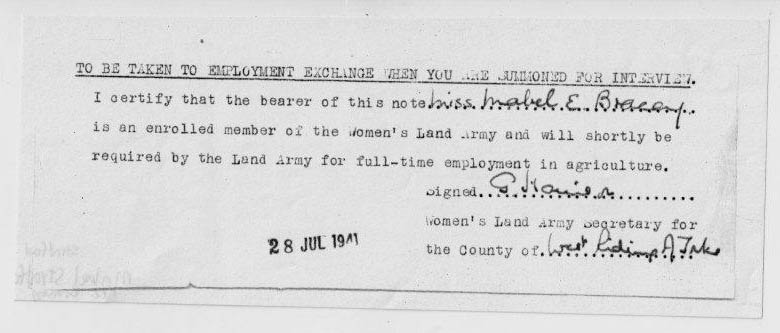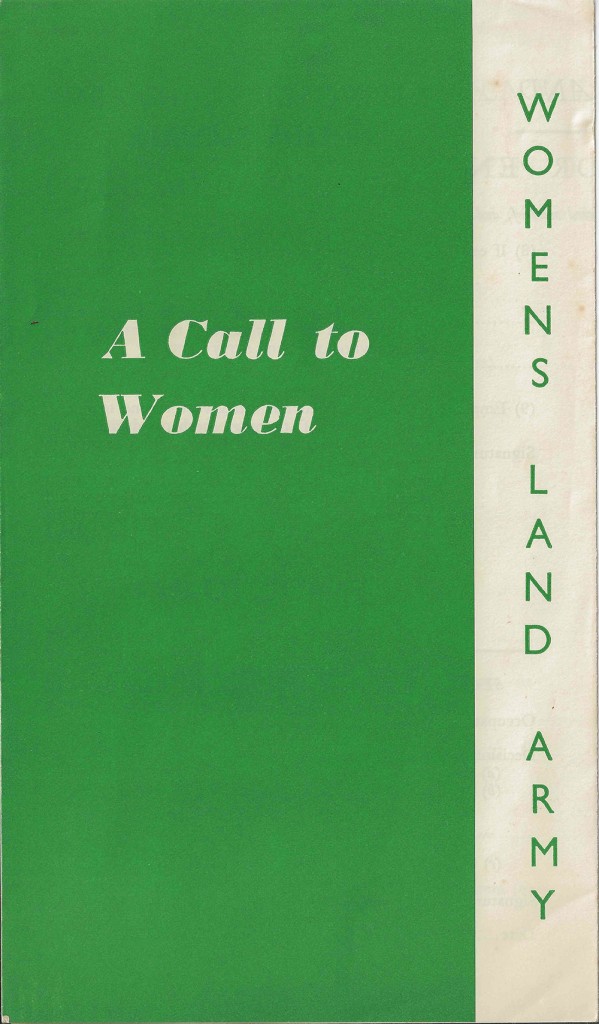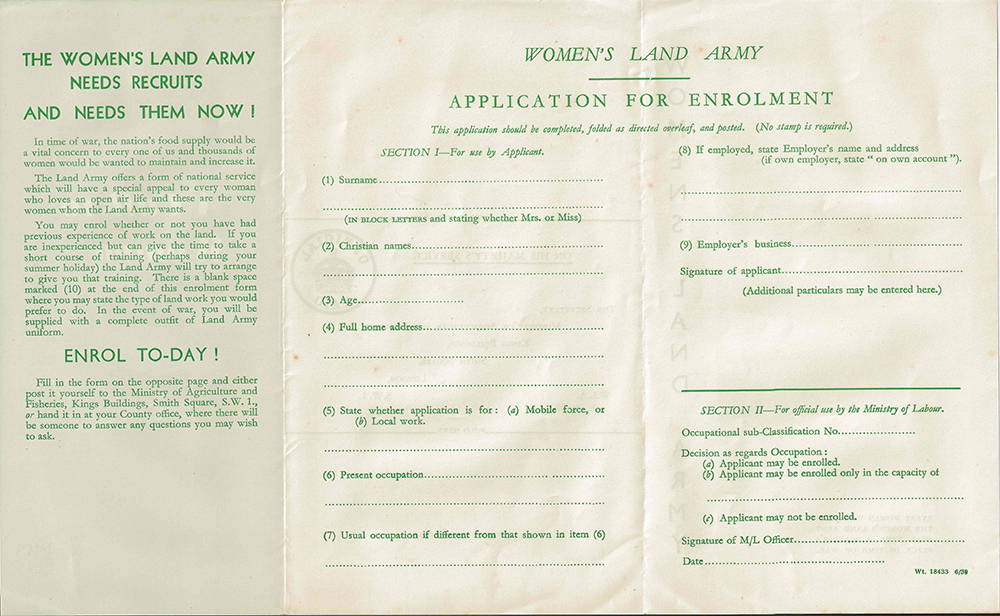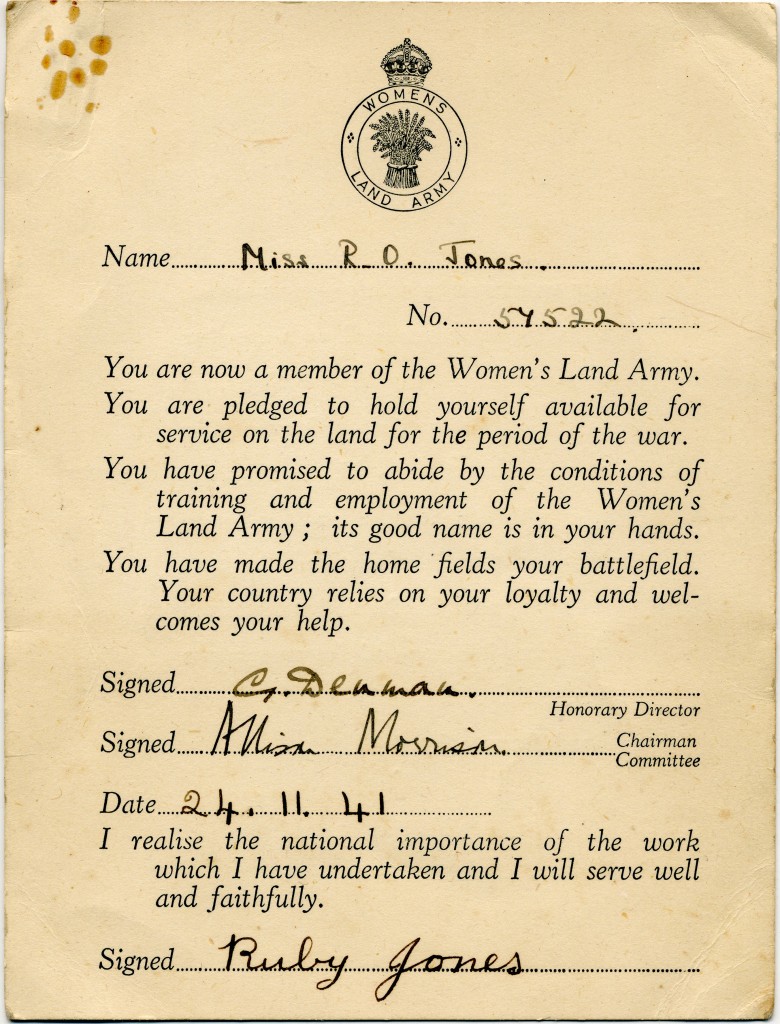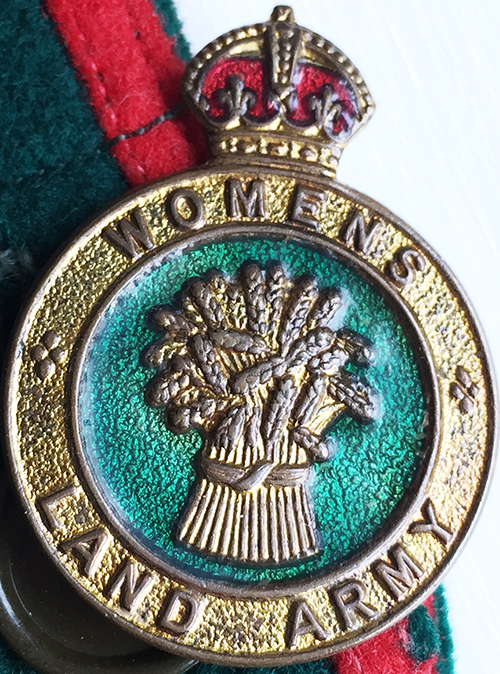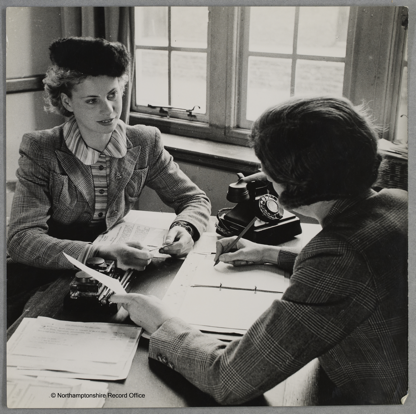
Source: D8793, Northamptonshire Record Office.
Courtesy of Dr David Wilson.
The Women’s Land Army looked for:
- physically fit young, unmarried women,
- who had no dependents,
- who were mature enough to leave home and
- be sent anywhere in the country.
Women enrolled at a local Women’s Land Army headquarters, or by registering their name on the National Service Guide at the local post office.
They had to be 17 years old in order to join the Women’s Land Army. Some women however joined when they were younger…
Ivy Hilda Jarrett (née Hogg) remembers why she signed up to the WLA:
“As I had two brothers in the Royal Engineers and one in the Royal Air Force I thought I would do my bit and join the WRAFs.
I had to tell them my age and they said sorry you have to be 17 1/2. I was very disappointed so I came home again. In the meantime I went to visit my cousin, who was at that time in the Women’s Land Army.
So (as you would) I fitted on her hat and thought it looked just right, and looked at all the other uniform. I decided I could not wait 6 months, so got the ball rolling to join the WLA.”
They were then invited to attend an interview.
This would give the panel a chance to meet the young woman in person. Women were usually asked about their
- Previous work
- Work preference
- Uniform size
- Present occupation
- Whether they required a bike
- Experience of country life
- 2 desired locations for working
The WLA also needed to check that they were not already working in reserved occupations, jobs that were essential to the war.
Women of a smaller size were questioned about whether they would be able to cope with the heavy manual work. ‘Well-turned’ out girls were also questioned about their ability to ‘muck down’ to the country lifestyle.
They had to take a medical test.
This wasn’t usually that strenuous – in some cases, the doctor just signed their certificate without carrying out any checks.
If successful, women would have their names added to the county register.
The WLA would then match women up with a local farmer. Women also received the Women’s Land Army badge. Once the war had started, women had to pledge themselves for the duration of the war.
The interview is meant to be friendly rather than formal, and much will depend upon the interview’s perception and tact….
Vita Sackville-West, The Women’s Land Army, 1944, p.16
Privately the interviewer is is of course sizing up the girl and forming her own estimate of her intelligence, physique, and general suitability.
In The Archives
A page from the National Service handbook, promoting the newly-formed WLA.
This handbook was sent to all households in 1939. Women could fill send in an application form if they were interested in enrolling.
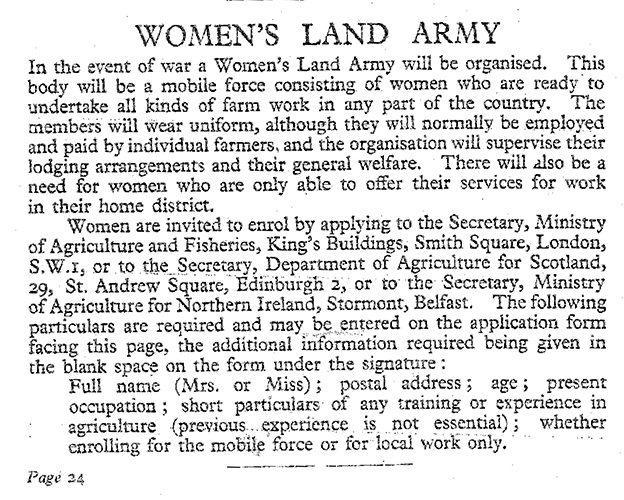
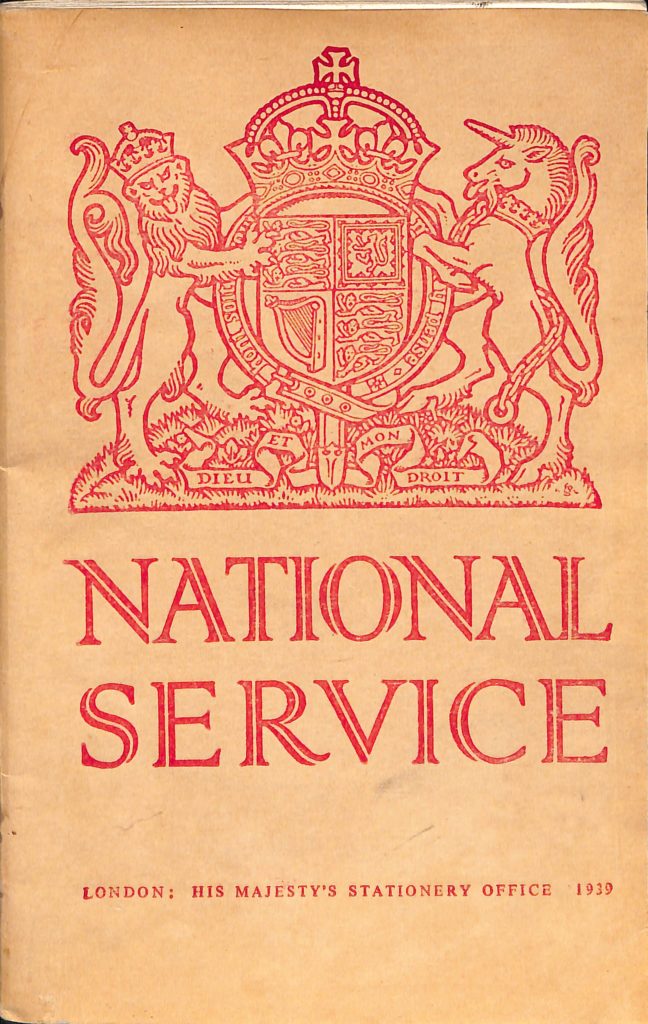
Stuart Antrobus interviewing Joyce Ingle (neé Irving) on joining the Women’s Land Army.
Slip giving signed evidence of Miss Mabel E Bracey’s enrolment in WLA in West Riding of Yorkshire.
This was to prove her employment at the employment exchange 28th July 1941.
